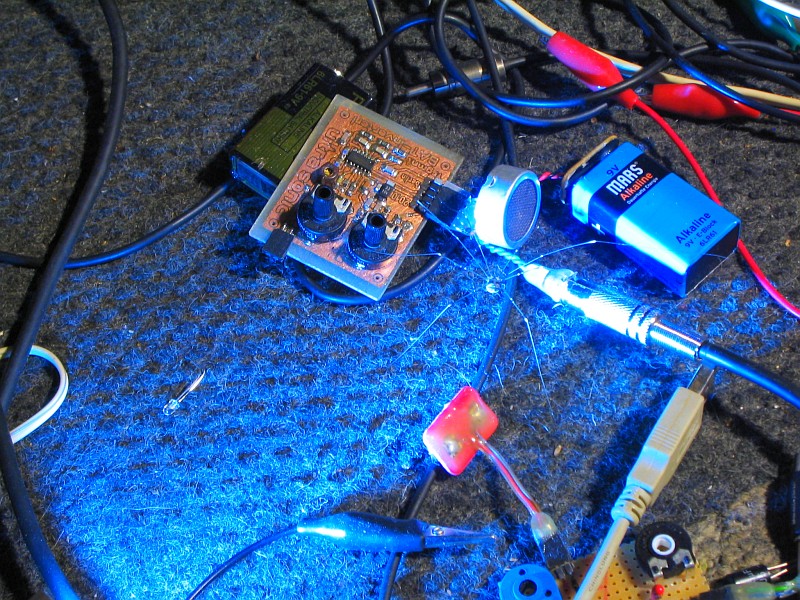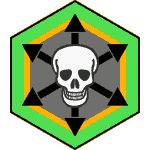Artist Statement about Electronic Workshops:
As more and more is known about the physical background, electronics turned into a science where devices are digitally simulated and calculated according to mathematical models.
Especially digital electronics with its binary states´ precisely defined 0 and 1, is -nobody wonders- either working or not working. For the majority of digital hardware that means: One wrong bit will break its operation. What we will make from digital chips is always working – but never exactly.
By definition states between 0 and 1 are not allowed. In digital electronic databooks these states are called “not defined” or “illegal”. They are not usable to build a reliable, predetermined, deterministic machine (e.g. a computer) which produces exact, reproducible output within its environmental parameters (i.e. the computer is functioning).
This exactness is remarkable, yet doesn’t fit to our known physical laws.
Where is the Heisenberg uncertainty (https://en.wikipedia.org/wiki/Uncertainty_principle) of modern quantum physics which should make such precision impossible?
The answer is astonishing: Digital electronics use symbolic states outside the physical reality! (https://computationstructures.org/notes/digitalabstraction/notes.html)
E.g. standard TTL logic gates (https://en.wikipedia.org/wiki/Logic_gate) operate with a 5 volt power supply. A TTL signal is defined as 0 or “low” when between 0V and 0.8V with respect to the ground terminal, and 1 or “high” when between 2.0V and 5V. States between 0.8V and 2.0V are “illegal”.
The experimental sound circuit SNU, which is the main device of the workshop, uses these illegal states and drives the digital chip it uses into this in-between world of uncertainty. What we get is complexity and uncontrollable behaviour. This workshop shows how building-blocks can be arranged in unusual ways. The SNU or the sequencer SEQ8 are just examples of how arrangements of the instruments can be build.
Not two of them will sound the same.
You get an alive instrument, different from a sampler that only controls premade sound. Like a violin, with many possibilities to create sound but also unpredictable moments, it requires constant judgement and adjustment of the player and at the same time has a live of its own.
or if you like..
 Workshop Special Noise Unit (SNU)
Workshop Special Noise Unit (SNU)
„Einfluß statt Kontrolle“
Bei diesem Workshop erhalten die TeilnehmerInnen die Möglichkeit, experimentelle Synthesizer zu bauen, fantastische Noise-Maschinen. Jede ist anders, Gesetze werden auf den Kopf gestellt, IngenieurInnen kriegen die Krise & doch funktionieren sie:
Unkontrollierbar, launisch und eigentümlich wie nur wenige Instrumente.
Hier gibt´s reichlich Werkzeug, Lötkolben und Elektronikbauteile – Vorkenntnisse sind nicht nötig.
This is @ the tweak festival in Limerick:
The next seven video snippets are by Natalia Borissova, Munich curator & artist, learning to know the SNU:
Some of my own pieces where the main soundsource is a SNU – SNU-II-Soundtest uses the additional Seq8-sequencer, all the “Fulda” pieces have a delay & occasional ring-modulator added. “Heisenberg” has an additional sample of Werner Heisenberg speaking about quantum physics & a tanpura loop:
![]() SNU-II-Soundtest, 03.06.08, 4.75mb
SNU-II-Soundtest, 03.06.08, 4.75mb
![]() Fulda sucks 2009, 21.08.09, 3.94mb
Fulda sucks 2009, 21.08.09, 3.94mb
![]() Fulda sucks 2009_2, 21.08.09, 81.18mb
Fulda sucks 2009_2, 21.08.09, 81.18mb
![]() Fulda fuck off – Just listen to Heisenberg I, 13.09.09, 83.00mb
Fulda fuck off – Just listen to Heisenberg I, 13.09.09, 83.00mb ![]() The Text
The Text
![]() This Thing is Fukking Speaking I – mastered 27.09.09, 11.25mb
This Thing is Fukking Speaking I – mastered 27.09.09, 11.25mb
Here is a sound test with a recently developed Ultrasonic device (+ a SEQ to modulate the new Ultrasonic-Transmitter):
![]() Slow Spider loves Ultrasonics when doing his Homework, 16.09.10, 73.10mb
Slow Spider loves Ultrasonics when doing his Homework, 16.09.10, 73.10mb
After the lame Intro here is the 1st Soundtest of the Ultrasonic Pulser we actually built:
![]() Ultrasonic Pulser 1st Test 26.10.2010, 7,87mb
Ultrasonic Pulser 1st Test 26.10.2010, 7,87mb


